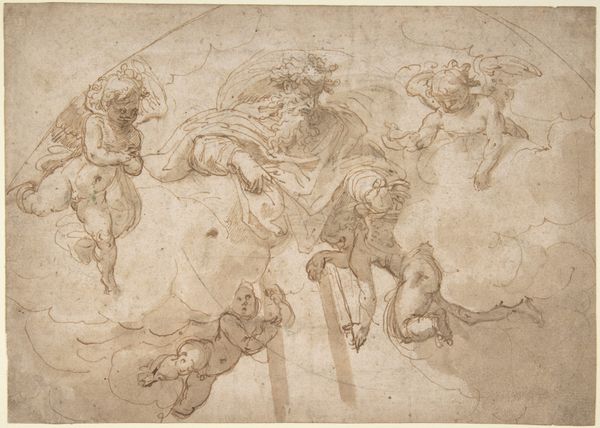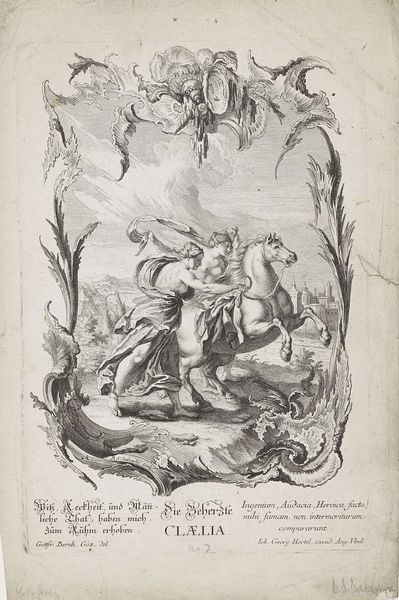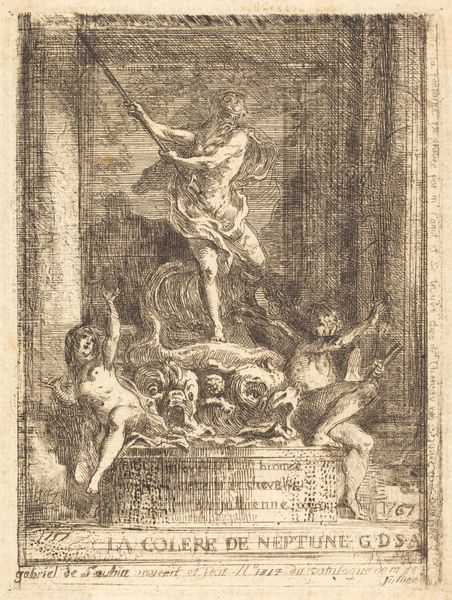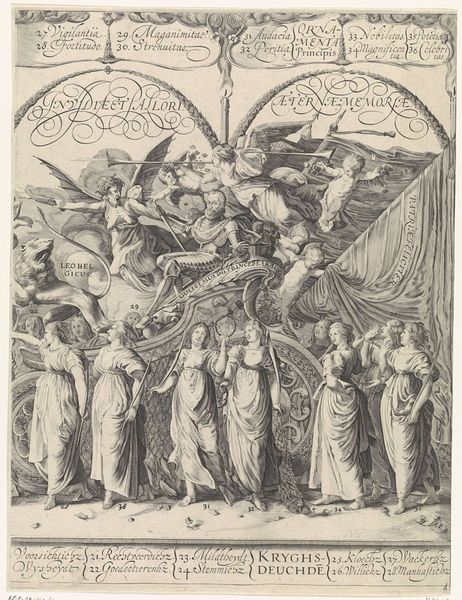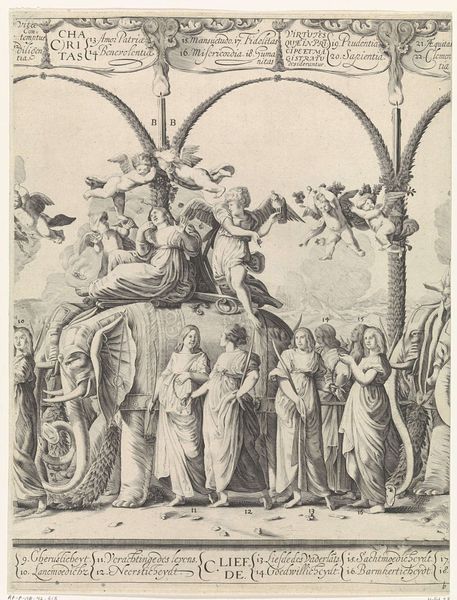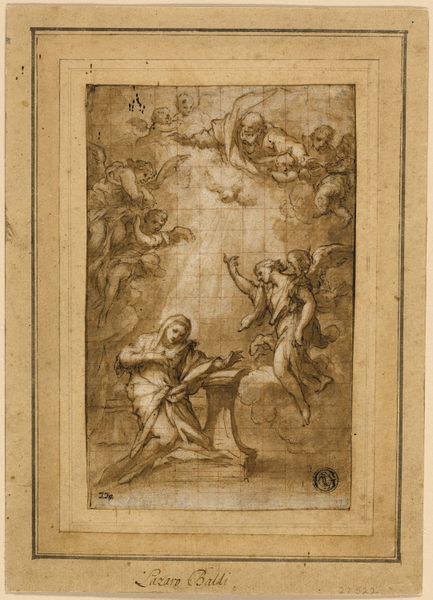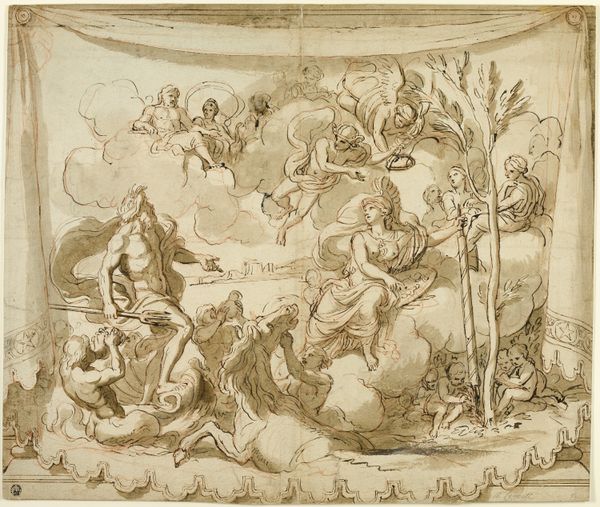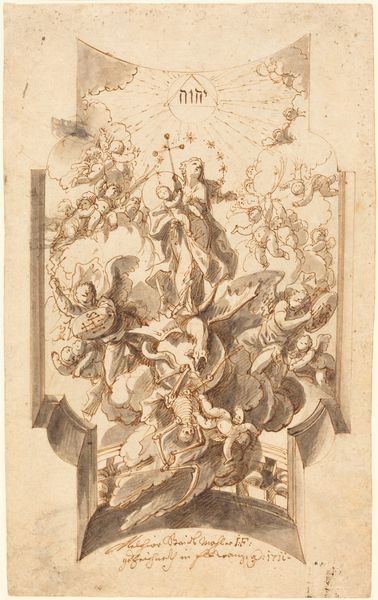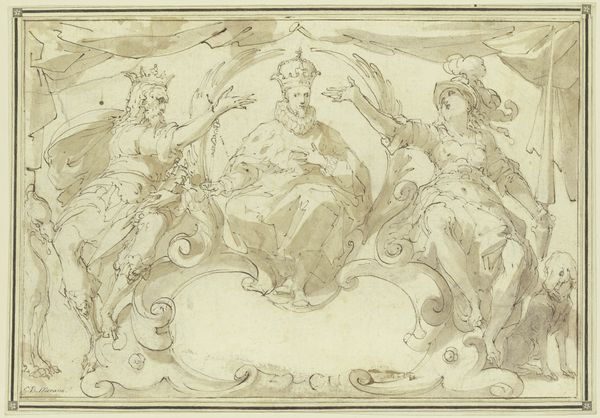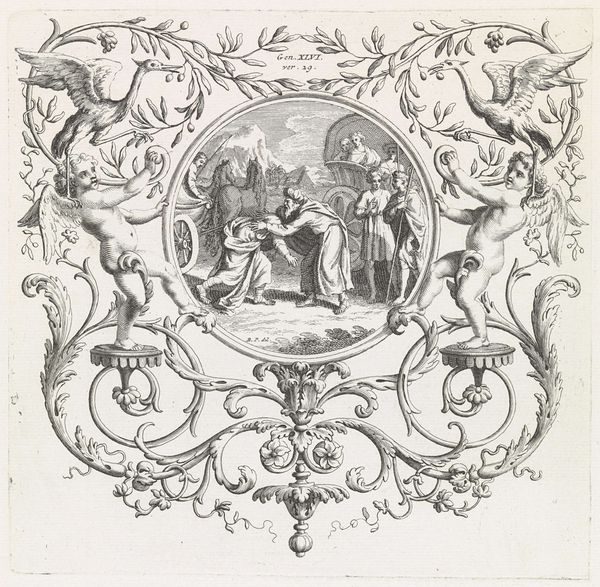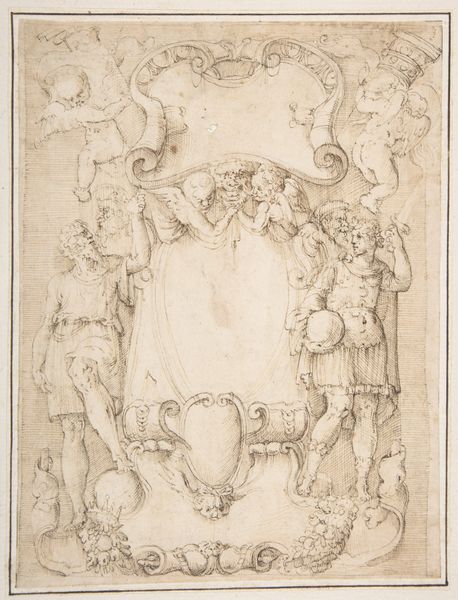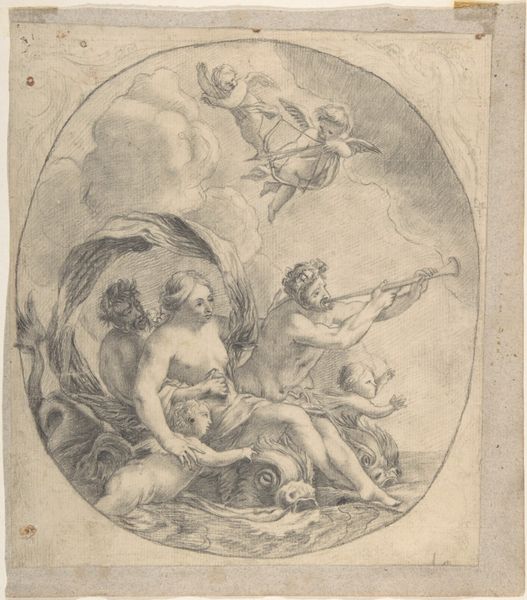
Allegory of Rome with Emblems of the Farnese Family c. 18th century
Dimensions 15.8 x 18.7 cm (6 1/4 x 7 3/8 in.)
Curator: The sepia tones lend an ethereal quality to this Etienne de Lavallée-Poussin drawing, "Allegory of Rome with Emblems of the Farnese Family." The winged figures atop unicorns give it a rather playful mood, wouldn’t you say? Editor: Playful, but strategically so. Poussin's choice of sepia wash emphasizes the materiality of the ink itself, underscoring the production of propaganda. The Farnese family is clearly being elevated here through Roman symbolism. Curator: Absolutely. Consider Rome, allegorized as a powerful woman, and the unicorns, symbols of purity and grace, bearing putti who carry Farnese emblems. It’s about legitimizing power, linking the family to ideals of virtue. Editor: And the medium reinforces this. Wash drawings allowed for relatively quick and cost-effective production, ideal for circulating idealized images of power structures in 18th-century society. Curator: Precisely. Understanding the drawing’s purpose reveals how power operates through symbolic representation. The allegorical figures are not just aesthetic; they are actively constructing a narrative. Editor: Seeing the work in this light underscores the material reality behind these visual strategies. It’s a potent reminder of the relationship between art, labor, and the social forces that shape them. Curator: Yes, considering these elements really allows us to think about whose stories are centered and whose are obscured. Editor: It highlights how art can be both beautiful and a tool for asserting dominance.
Comments
No comments
Be the first to comment and join the conversation on the ultimate creative platform.

